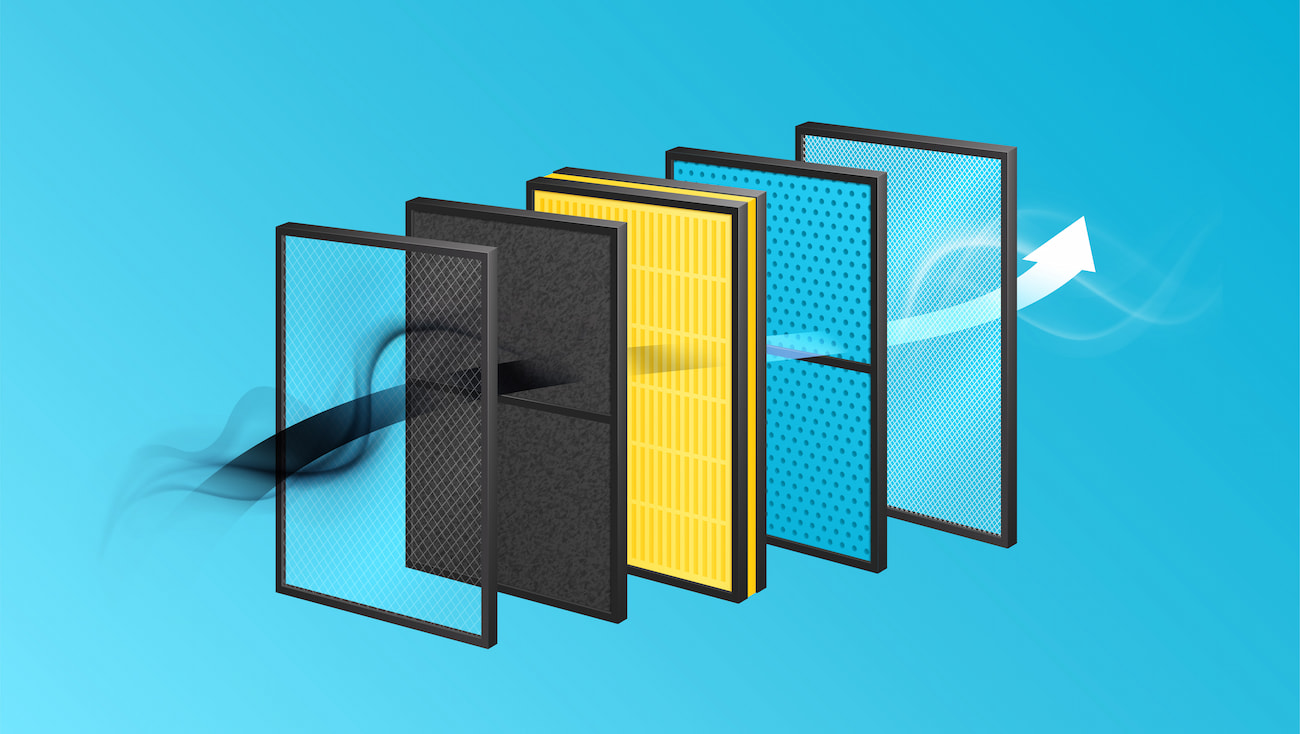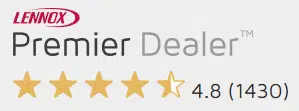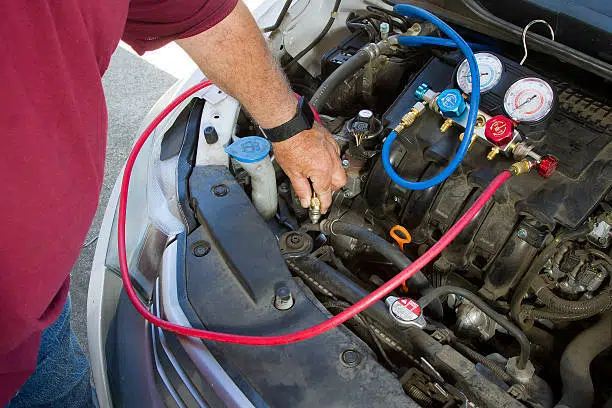
Table of Contents
Your home is your sanctuary, and maintaining a healthy indoor environment is paramount. The quality of the air you breathe directly impacts your well-being, and a key player in this equation is your furnace air filters. Furnace filters act as the frontline defense against airborne particles, allergens, and pollutants, ensuring the air circulating in your home is clean and safe.
Understanding the nuances of the furnace filter MERV rating system is crucial for optimizing the performance of your furnace filter. In this guide, we will demystify the MERV rating, empowering you to make informed decisions that contribute to a healthier indoor environment for you and your loved ones.
What Is a Furnace Filter MERV Rating?
The Minimum Efficiency Reporting Value (MERV) is a numerical scale that quantifies the effectiveness of air filters in capturing and trapping airborne particles. The MERV scale typically ranges from 1 to 20, with each level signifying the filter’s ability to capture particles of varying sizes. A lower MERV rating (1-4) indicates basic filtration, suitable for larger particles like dust and debris. As you progress up the scale, higher ratings (13-20) signify enhanced efficiency, capable of trapping finer particles, including allergens and microscopic pollutants.
Generally speaking, furnace air filters with higher MERV ratings excel at trapping smaller particles, offering superior protection against contaminants such as bacteria, viruses, and smoke. On the other hand, filters with lower ratings are effective against larger particles but may allow finer particles to pass through.
Check out the detailed instructions on how to choose the perfect air filter for your furnace in our previous guide
Tailoring Your Furnace Filter MERV to Your Lifestyle
Your household is unique, and so are your air quality needs. Do you or your family members have allergies? Do you have pets? What are your air quality goals? By answering these questions, you can tailor your filter choice to address specific concerns, ensuring optimal performance for your home.
In the next section, we will explain what MERV rating best suits your indoor air quality needs.
Furnace Filter MERV Ratings and Airborne Particles

The world of airborne particles is diverse, ranging from the larger, visible ones like dust and debris to the microscopic culprits like bacteria and viruses. Identifying the specific particles that concern you is crucial. Are allergies a constant battle? Do you want to combat pet dander or allergens like pollen and mold spores? Understanding your adversaries sets the stage for a more targeted and effective filtration strategy.
Low to Moderate Filtration (MERV 1-6)
In the realm of MERV ratings, lower numbers (1-6) are associated with basic filtration. If your main concern is the everyday dust and larger particles that are visible to the naked eye, filters with these lower MERV ratings will serve you well. These filters ensure the smooth operation of your HVAC system, preventing the accumulation of visible particles and maintaining overall cleanliness.
Allergy Relief (MERV 7-12)
For households grappling with allergies, the battle extends beyond the visible particles. Mid-range MERV ratings between 7 and 12 strike a balance, effectively capturing finer particles like pollen, mold spores, and pet dander. These filters provide relief for allergy sufferers without imposing a heavy burden on your HVAC system, ensuring a healthier indoor environment.
Superior Filtration (MERV 13-16)
In environments where air quality is paramount, such as hospitals, laboratories, or homes with stringent standards, higher MERV ratings (13-16) come into play. These filters excel at trapping smaller particles, including bacteria and smoke, offering superior filtration for a cleaner, healthier indoor environment. They are the guardians of your indoor air, ensuring that even the tiniest of pollutants are captured.
Specialized Filtration (MERV 17-20)
For situations demanding the utmost precision, filters with MERV ratings of 17-20 are deployed. These filters are the elite, providing specialized filtration for environments like cleanrooms or industrial settings. With the ability to capture even microscopic particles, they meet the most rigorous standards, making them crucial for maintaining pristine air quality.
MERV Range | Controlled Contaminants | Typical Application | Air Filter Types |
|---|---|---|---|
1-6 | Larger particles like dust and debris
| Residential settings | Fiberglass, Washable Filters |
7-12 | Finer particles such as pollen, mold spores, pet dander | Residential and commercial settings | Pleated, Electrostatic Filters |
13-16 | Smaller particles including bacteria, smoke, and fine particles | Hospitals, laboratories, critical environments | HEPA filters, High-Performance Filters |
17-20 | Ultra-fine particles | Cleanrooms, industrial settings | Ultra HEPA, Specialty Filters |
HVAC Service Solutions is your partner in creating a healthier indoor environment tailored to your needs. Reach out to us via the link below and take one step toward a healthier lifestyle.
Conclusion
In summary, selecting the right MERV rating for your furnace filter involves thoughtful consideration of your household needs, air quality goals, and HVAC system compatibility. If your concerns are larger articles or you have an allergy, opt for a MERV rating in the 1-6 range, or a mid-range MERV rating between 7 and 12. When superior filtration is essential, aim for a higher MERV rating, between 13 and 16. This level excels at trapping smaller particles, making it suitable for critical environments like hospitals and laboratories, or for those with heightened air quality standards.
Ready to enhance your indoor air quality? Contact HVAC Service Solutions for a personalized consultation or to schedule a filter replacement service. Our team of experts is dedicated to ensuring your HVAC system operates at its best, providing you with a comfortable and healthy living environment.
Frequent Asked Questions
What Does MERV Rating Indicate in a Furnace Filter?
MERV stands for Minimum Efficiency Reporting Value, a standard that rates the effectiveness of air filters. The scale ranges from 1 to 20, with higher numbers indicating a filter’s ability to capture smaller particles. A higher MERV rating means better filtration performance, particularly important for capturing fine particles like pollen, mold spores, and even bacteria.
For homeowners, understanding MERV ratings helps in choosing a filter that balances air quality needs with HVAC system capabilities. While a higher MERV filter provides better air purification, it also requires more energy to pull air through, potentially impacting your furnace’s efficiency and lifespan.
How Do I Choose the Right MERV Rating for My Home?
The ideal MERV rating varies based on individual circumstances. For homes with pets, allergy sufferers, or in areas with high pollution, a higher MERV rating (between 8 and 13) might be necessary. These filters can more effectively capture pet dander, pollen, and other allergens.
It’s crucial to consider your HVAC system’s specifications. Some systems are not designed to handle the airflow resistance created by higher MERV filters. Using a filter with too high a MERV rating can strain the furnace, leading to higher energy bills and potential damage.
Can Higher MERV Filters Affect My Furnace's Performance?
Filters with high MERV ratings can restrict airflow more than those with lower ratings. This can cause your furnace to work harder, potentially reducing its efficiency and lifespan. It’s essential to balance air quality needs with the capability of your furnace.
While higher MERV filters capture more particles, they can also increase energy consumption. A furnace has to exert more effort to circulate air through denser filters, potentially leading to higher energy bills.
Are Higher MERV Filters Better for Allergy Sufferers?
For allergy sufferers, filters with a MERV rating of 8-12 are often recommended. These filters are effective at capturing common allergens like pollen, pet dander, and dust mites.
The specific needs of allergy sufferers can vary. It’s important to consider the types of allergens present in your home and choose a filter that can effectively capture those particles without overburdening your HVAC system.
How Often Should I Replace My Furnace Filter, and Does MERV Rating Affect This?
Generally, furnace filters should be replaced every 90 days, but this can vary based on the MERV rating, household factors like pet ownership, and local air quality. Higher MERV filters may need to be replaced more frequently as they capture more particles and can become clogged faster.
Keep an eye on your furnace’s airflow and system performance. If you notice reduced airflow or your system working harder, it might be time to check and possibly replace your filter, regardless of the MERV rating.
Is It Worth Investing in the Highest Possible MERV Rating Filter?
The highest MERV rating filters (16-20) are typically used in healthcare settings and may not be necessary or beneficial for most residential homes. These filters can be significantly more expensive and may not be compatible with standard residential HVAC systems.
For most homes, a balanced approach with a mid-range MERV rating (around 8-13) can effectively improve air quality without unnecessarily straining the HVAC system or inflating energy costs.
What Are the Health Benefits of Using Higher MERV Rated Filters?
Higher MERV rated filters can significantly improve indoor air quality by efficiently capturing smaller particulates like pollen, mold spores, smoke, and even some bacteria and viruses. This is particularly beneficial for individuals with respiratory issues, allergies, or weakened immune systems.
Limitations and Considerations: While higher MERV filters provide better filtration, they must be compatible with your HVAC system to avoid reduced airflow and system strain. It’s important to balance health benefits with the operational limits of your heating system.
Can I Use a High MERV Filter in Any Furnace?
Not all furnaces are designed to handle high MERV filters. Before upgrading, check your furnace’s specifications or consult with an HVAC professional. Using a filter with a MERV rating too high for your system can restrict airflow and cause your furnace to work harder, potentially leading to damage or reduced efficiency.
If unsure, it’s best to seek advice from a heating and cooling specialist who can recommend the best filter option based on your specific furnace model and your air quality needs.
How Does the MERV Rating Compare to Other Air Filter Ratings?
- MERV vs. HEPA: High-Efficiency Particulate Air (HEPA) filters are often used in medical settings and offer superior filtration compared to standard MERV-rated filters. HEPA filters can trap particles as small as 0.3 microns, which is finer than the highest MERV ratings.
- MERV vs. Other Ratings: Other ratings like MPR (Microparticle Performance Rating) and FPR (Filter Performance Rating) are used by specific brands and can differ from the MERV scale. MERV remains the industry standard and provides a more universally comparable measure of filter efficiency.
Are There Any Downsides to Using a Filter With a High MERV Rating?
Filters with very high MERV ratings can restrict airflow more than lower-rated filters, potentially straining your HVAC system. This can lead to increased energy usage, reduced system efficiency, and even premature system breakdown if the filter is not compatible with your furnace.
Higher MERV rated filters are typically more expensive than lower-rated ones and may require more frequent replacement due to quicker clogging with particles, leading to increased ongoing costs.
Does the MERV Rating Affect the Spread of Viruses in My Home?
Higher MERV rated filters (around 13-16) can be effective in capturing virus-carrying particles, potentially reducing the spread of airborne viruses in your home. However, it’s important to note that air filtration is only one component of virus prevention.
To effectively reduce the risk of virus transmission, a comprehensive approach including proper ventilation, maintaining indoor humidity levels, and regular cleaning and disinfecting is recommended alongside using high-quality air filters.
Share



















